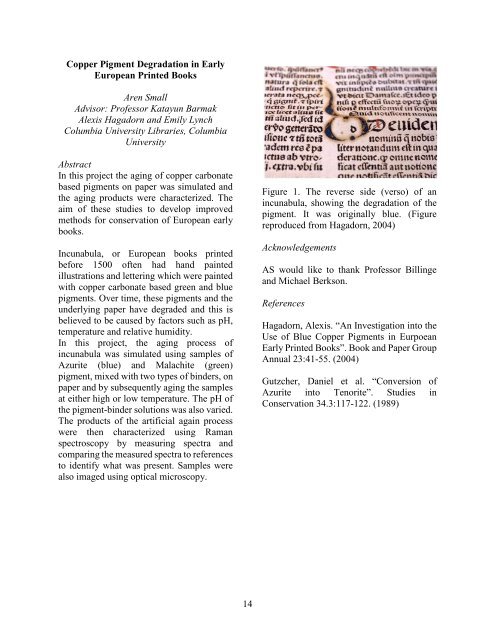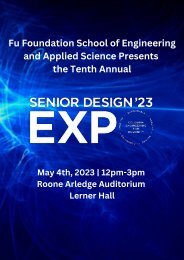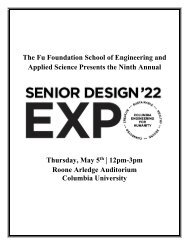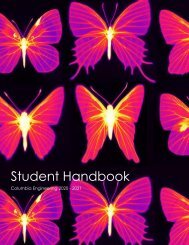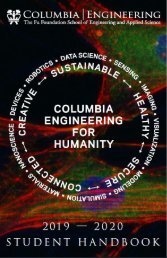Senior Design Expo 2019
The Senior Design Expo, held annually in May at Columbia University, is an opportunity for Columbia Engineering students to showcase what they have learned in their foundational math and science courses together with their engineering courses in innovative, creative, and purposeful designs and prototypes. Each year the Expo showcases more than 60 projects across all nine departments. Projects have included cutting-edge robotics, the New York City subway system, language technology, proposals for bridges to span the Hudson river, and much more.
The Senior Design Expo, held annually in May at Columbia University, is an opportunity for Columbia Engineering students to showcase what they have learned in their foundational math and science courses together with their engineering courses in innovative, creative, and purposeful designs and prototypes. Each year the Expo showcases more than 60 projects across all nine departments. Projects have included cutting-edge robotics, the New York City subway system, language technology, proposals for bridges to span the Hudson river, and much more.
You also want an ePaper? Increase the reach of your titles
YUMPU automatically turns print PDFs into web optimized ePapers that Google loves.
Copper Pigment Degradation in Early<br />
European Printed Books<br />
Aren Small<br />
Advisor: Professor Katayun Barmak<br />
Alexis Hagadorn and Emily Lynch<br />
Columbia University Libraries, Columbia<br />
University<br />
Abstract<br />
In this project the aging of copper carbonate<br />
based pigments on paper was simulated and<br />
the aging products were characterized. The<br />
aim of these studies to develop improved<br />
methods for conservation of European early<br />
books.<br />
Incunabula, or European books printed<br />
before 1500 often had hand painted<br />
illustrations and lettering which were painted<br />
with copper carbonate based green and blue<br />
pigments. Over time, these pigments and the<br />
underlying paper have degraded and this is<br />
believed to be caused by factors such as pH,<br />
temperature and relative humidity.<br />
In this project, the aging process of<br />
incunabula was simulated using samples of<br />
Azurite (blue) and Malachite (green)<br />
pigment, mixed with two types of binders, on<br />
paper and by subsequently aging the samples<br />
at either high or low temperature. The pH of<br />
the pigment-binder solutions was also varied.<br />
The products of the artificial again process<br />
were then characterized using Raman<br />
spectroscopy by measuring spectra and<br />
comparing the measured spectra to references<br />
to identify what was present. Samples were<br />
also imaged using optical microscopy.<br />
Figure 1. The reverse side (verso) of an<br />
incunabula, showing the degradation of the<br />
pigment. It was originally blue. (Figure<br />
reproduced from Hagadorn, 2004)<br />
Acknowledgements<br />
AS would like to thank Professor Billinge<br />
and Michael Berkson.<br />
References<br />
Hagadorn, Alexis. “An Investigation into the<br />
Use of Blue Copper Pigments in Eurpoean<br />
Early Printed Books”. Book and Paper Group<br />
Annual 23:41-55. (2004)<br />
Gutzcher, Daniel et al. “Conversion of<br />
Azurite into Tenorite”. Studies in<br />
Conservation 34.3:117-122. (1989)<br />
14


